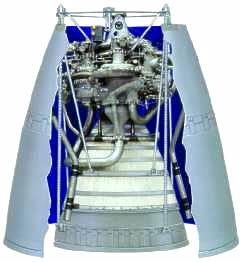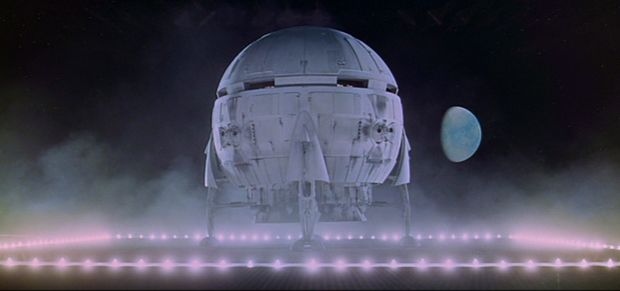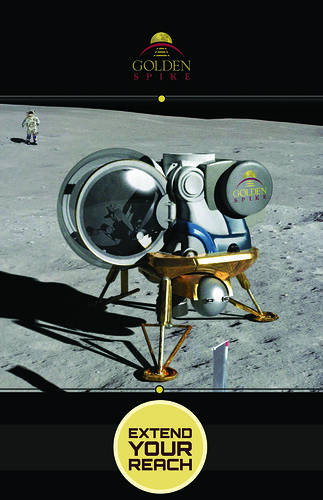Copyright 2012 Robert Clark
It is generally acknowledged that the SLS is based on the DIRECT teams "Jupiter" launcher. Then their respective launchers closely mirror each other in their payload capabilities for versions with similar components. The Block 0 SLS was initially planned to have a 70 mT payload capability, as mirrored by the corresponding DIRECT launcher:
http://www.directlauncher.org/documents/Baseball_Cards/J130-41.4000.08100_CLV_100x100nmi_29.0deg_090606.jpg
In reports on the Block 0 SLS, NASA discussed the option of it using 4 or 5 segment SRB's as if it were no big deal. But I was surprised when I looked at the 5 segment version on the DIRECT teams site, that the payload jumped to ca. 95 metric tons:
http://www.directlauncher.org/documents/Baseball_Cards/J130H-41.5000.08100_CLV_30x100nmi_29.0deg_090608.jpg
Ed Kyle who operates the SpaceLaunchReport.com site also estimates this first SLS version will have a payload to LEO of 95 mT. A jump in payload of 25,000 kg is a big deal. It's the difference in payload for instance between the 105 metric ton Block 1A version, and the 130 metric ton Block 2 version of the SLS. It would also mean the Block 0 given 5-segment SRB's would be close to the "magic" 100 metric ton payload number. And with just the interim upper stage, it would certainly exceed that.
Judging by this Chris Bergin article, we would expect the 5 segment SRB's to be ready by the 2017 first flight of the SLS:
ATK and NASA ground test their SLS-bound five segment motor.
September 8th, 2011 by Chris Bergin
As far as ATK’s role in SLS, documentation (L2) shows the Utah-http://www.nasaspaceflight.com/2011/09/atk-and-nasa-ground-test-five-segment-motor/
based company have proposed a Firm Fixed Price (FFP) contract for 10
boosters, available between 2012-2015, whilst noting available assets
that can support up to 11 SLS missions prior to asset depletion in
2020.
The current plan now is to go directly to a Block 1 launcher, scheduled for a 2017 flight date. This will use 5-segment SRB's instead of the regular 4-segment ones planned for the Block 0. But the DIRECT teams 5-segment version of their Jupiter rocket has nearly a 95 mT capability. Moreover, NASA wants to give the Block 1 an additional SSME core engine and stretch the tank. Then it will have even greater payload than the 95 mT of the corresponding DIRECT teams launcher.
So NASA is still using the 70 mT payload number of the Block 0 in discussing this initial flight of the SLS when the actual payload capability will be 95+ mT. I think NASA should be more clear about what the actual capabilities of that first version of the SLS to fly will actually be. Saying it will do 70 metric tons to LEO is misleading as to what that first version can actually do.
According to the reports that first version to fly will even have an interim cryogenic upper stage, and at quite low cost by the reports if the Delta IV derived one is used. Presumably, this will improve the LEO capability, perhaps to the 100 to 105 metric ton range.
A launch capability this high raises the possibility of even doing lander missions not just lunar flyby's. This is important because it means we will have the capability of doing lunar lander missions not just in 2030 when the full SLS comes on line but just in 5 years.
This becomes even more important when you realize the necessary stages, the Centaurs, already exist to make the Earth departure/lander stages. ULA has written numerous reports on markedly reducing boiloff in the Centaurs so that we can consider that to be well understood, and essentially solved.
It has been complained that the SLS has no mission. NASA being direct, so to speak, about what the actual capabilities of that first version of the SLS to fly will make clear that the SLS does have an important mission, and in the very near term and at (comparatively) low cost: Return to the Moon.
CALCULATIONS
A Simple, Low Cost Upgrade.
A question asked about the SLS is that if the Block 0 is derived from the space shuttle system that could lift 100+ mT to orbit when you include both the orbiter and payload, then why could the Block 0 only lift 70 mT to orbit? The answer is that for the shuttle the SSME engines only took the orbiter to a highly elliptical orbit whose perigee lied well within the Earth's atmosphere. This ensured the external tank after being jettisoned would reenter the atmosphere and break up on return.
The shuttle would then use one or two OMS burns to raise the perigee and circularize the orbit. These OMS burns typically only totaled 90 m/s or less. Note that the total thrust of these OMS engines for the 100 mT+ shuttle was only about 6,000 kgf. This thrust is less than that of a single RL-10 engine. Then a way to recover the full mass to orbit of that of the shuttle system is by using a small propulsive stage to provide the same low amount of extra delta-v as provided by the shuttle's OMS engines.
The shuttle orbiter with payload and with OMS fully fueled can mass 120 mT. An OMS burn of 90 m/s is less than 1/3rd the total OMS delta-v available of 305 m/s. So much of the OMS propellant of 12.8 mT will remain, with the remaining gross mass of the orbiter at the end of the OMS burn being above 100 mT.
This delta-v change for a 100 mT payload can be done by just a cryogenic stage at only 1/10th the size of a Centaur upper stage, one of only 2 mT size. The Centaur has better than 10 to 1 mass ratio. But mass ratio gets better as you scale up or said another way gets worse as you scale down.
The 'Golden Spike' paper on a commercial return to the Moon plan gives estimated sizes for some smaller cryogenic stages than the Centaur in a table on page 13. One at a 2,172 kg propellant load is given a dry mass of 445 kg. This could provide a 90 m/s delta-v to a 105 mT payload with a RL-10 engine at 451 s Isp:
451*9.81ln(1 + 2.172/(.445 + 105) = 90 m/s.
Note this is just for Block 0. But the actual first version to be launched will be the Block 1 with 25% greater size and thrust on the SRB's and 33% greater size and thrust on the core stage. Then also using a small cryogenic stage the payload would be at least 25% greater than the 105 mT amount and probably closer to 30% greater since the upper stage that actually reaches orbit has a greater influence on payload than a lower stage.
Even 25% greater would put the payload at 130 mT. This matches the payload of the expensive Block 2 SLS but only requiring a small cryogenic stage a fraction of the size of a Centaur, and would be available by the 2017 first launch of the SLS.
Return to the Moon Architecture.
In the post "SLS for Return to the Moon by the 50th Anniversary of Apollo 11" I suggested the Space Exploration Vehicle(SEV) be used alone as the single crew module for a lunar mission following the Early Lunar Access architecture. However, the Orion capsule has had billions of dollars spent on it and therefore has a lot of political capital attached to it. So I'll show we can also have a design that uses the Orion for the traverse from Earth orbit to lunar orbit and the return, with the SEV just for the trip from lunar orbit to the lunar surface. Using all cryogenic propulsion this will be doable using the likely 95 mT or higher payload first version of the SLS scheduled to launch in 2017. Using both the Orion and the SEV is in the plan NASA is considering for asteroid missions. I'm suggesting it also be used for lunar missions to get a lightweight architecture, rather than using some analogue of the quite heavy Altair lander (45 metric tons, really??).
Use the delta-v's for the Earth-Moon system shown here:
Delta-V budget.
Earth–Moon space.
443*9.81ln(1 + 8.2/(1.5 + 4)) = 3,970 m/s, sufficient for the flight to and from the lunar surface from low lunar orbit.
For a stage to insert the Orion+SEV lander into lunar orbit and return the Orion to Earth from lunar orbit, use the Ariane H10-3 LH2/LOX upper stage. This stage has a gross mass of 12,310 kg and dry mass of 1,570 kg, at a 445 s Isp. I'll round off the mass values to 12,300 kg and 1,600 kg, so 10,700 kg of propellant.
The delta-v to insert into lunar orbit is 900 m/s, and the translunar injection(TLI) delta-v is 3,140 m/s making up the 4,040 m/s delta-v to go from LEO to low lunar orbit(LLO), as shown in the table above.
Use 9 mT for the crewed mass of the Orion, and 13.7 mT for the SEV plus lander. Now burn only 6.9 mT of propellant for the lunar insertion, retaining 3.8 mT of the propellant after the lunar orbit insertion in order to be able to return Orion back to Earth. Then:
445*9.81ln(1 + 6.9/(1.6 + 9 + 13.7 + 3.8)) = 960 m/s, sufficient for lunar orbit insertion.
Now for the return of the Orion, we have:
445*9.81ln(1 + 3.8/(1.6 + 9)) = 1,340 m/s, sufficient to go from low lunar orbit back to LEO, according to the table above. (Actually other sources give the required delta-v to break lunar orbit as only 900 m/s, same as to enter orbit, so it may be possible to make this stage even smaller.)
Now we need a stage to do the translunar injection(TLI), requiring 3,140 m/s delta-v. The Centaurs have the best Isp and mass ratio of any upper stages so we'll use those. You could use two of them firing together in parallel or get better mass to TLI by firing them serially. For simplicity I'll use the twin, parallel Centaur format. Rounding off, the Centaur has 21 mT propellant and 2 mT dry mass, with 451 s Isp. So two together would be 42 mT propellant and 4 mT dry mass. The Orion, SEV, and cryogenic stages together mass 35 mT. Then:
451*9.81ln(1 + 42/(4 + 35)) = 3,230 m/s, sufficient for TLI.
Then the total mass that needed to be lofted to orbit would be 81 mT. The leeway between this and the 95 mT, and likely higher, payload capacity of the SLS would probably allow even hypergolics to be used at least for the departure stages, both from the lunar surface and from lunar orbit.
Increasing Mass Ratio to Improve Performance.
An even better option than the twin Centaurs would be to use the proposals of ULA (United Launch Alliance) to scale the Centaurs up larger, widen their diameters, and use lightweight aluminum-lithium instead of the steel now used. ULA suggests by doing this their mass ratio can be increased from 10 to 1 to 20 to 1. This is discussed by Jon Goff on his site, Selenian Boondocks.
Scaling a rocket stage up is known to increase mass ratio. Widening them improves mass ratio because the closer a tank is to sphere the better the storage efficiency, a sphere having the best mass efficiency. And in regards to strength compared to weight, Al-Li can be as much as twice as good as steel.
These weight saving methods should also be applied to the smaller cryogenic stages to improve their performance. For instance the Ariane cryogenic stages I used above may be able to reach 10 to 1 mass ratios by following this. ULA has discussed improving mass ratio as the best way to improve performance at the NewSpace 2012 conference.
A Centaur-style stage with these weight saving techniques applied at a 40 mT propellant load and 2 mT dry mass using the best vacuum Isp for a RL-10 series engine at 465.5 s can transport 5 mT from LEO to the Moon and back as a single stage:
465.5*9.81ln(1 + 40/(2 + 5)) = 8,700 m/s, sufficient for the round-trip according to the table above.
Actually since the delta-v of a launch to LEO is just a little more than this delta-v for a round-trip lunar mission, I like to think of this example as a stealth SSTO. ULA in maximizing the mass ratio of a Centaur-style stage while at the same time using the highest Isp engine would unwittingly also create a SSTO, capable of significant payload to orbit.
For this SSTO to have an engine that can operate at sea level, the nozzle extension would have to be retracted at launch and extend while the engine is firing. According to Henry Spencer, this has already been successfully tested.
 |
| RL-10-B2 with nozzle retracted. |
2001: A Space Odyssey.
Another version of this high mass ratio upper stage would put it in the from of a sphere. Since a sphere has the best mass efficiency for a tank this would get an even better mass ratio, and could carry more payload. This would be most useful for the lunar transport case since you would not have to worry about the high air drag of a spherical launcher as in the ground launched case.
This would be interesting since it could serve as an homage to 2001: A Space Odyssey.
Aries lunar shuttle.
Bob Clark
Update, Sept. 28, 2013:
Finally, NASA has acknowledged that the Block 1, first version of the SLS to launch in 2017 will have a 90+ mT payload capacity not the 70 mT always stated by NASA:
SLS Dual Use Upper Stage (DUUS).
http://ntrs.nasa.gov/archive/nasa/casi.ntrs.nasa.gov/20130013953_2013013757.pdf
This is important since it means we will have the capability to do manned lunar landing missions by the 2017 first launch of the SLS:
SLS for Return to the Moon by the 50th Anniversary of Apollo 11, page 5: A 90+ metric ton first launch of the SLS.
http://exoscientist.blogspot.com/2013/09/sls-for-return-to-moon-by-50th.html






